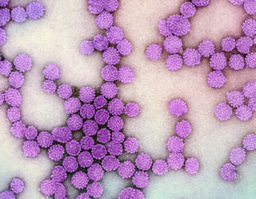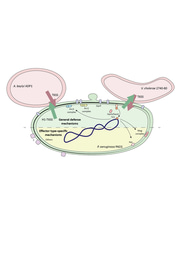Unlocking Cellular Aging with HuT mice, mice with Humanized Telomeres
Published in Protocols & Methods, Cell & Molecular Biology, and Biomedical Research

Aging has long captivated human curiosity, often viewed both as a scientific challenge and an undeniable reality of life. Scientists have tirelessly sought to decode its secrets, searching for ways not just to extend lifespan but also to improve the quality of life in our later years. At the heart of this process lies the gradual shortening of telomeres, the protective caps at the ends of chromosomes that prevent DNA damage. As telomeres shorten with each cell division, over time they reach a critical length, disrupting normal cellular functions and leading to aging. This threshold, known as the Hayflick limit, occurs in humans because most adult cells have short telomeres and lack telomerase, an enzyme that synthesizes telomeres. Understanding this process is crucial for developing interventions to promote healthy aging and combat age-related diseases.
While humans naturally experience telomere shortening with age, traditional animal models, like mice, have posed challenges for researchers due to fundamental differences in telomere biology. In a groundbreaking achievement published in Nature Communications, we have created a mouse line with human-like telomeres, called HuT mice. Through a complex genetic engineering effort, we modified the mouse telomerase gene by introducing human regulatory sequences. The result is a mouse model with telomerase behavior similar to that found in humans, allowing for the study of cellular aging in vivo—a breakthrough that opens the door to transformative research opportunities.
Why HuT Mice?
Mice have long been the workhorses of biomedical research, but their telomere biology has been a stumbling block in translatability. Their telomeres are ten times longer than ours, and their cells express telomerase at much higher levels, even in adult tissues. Consequently, mouse cells do not undergo the Hayflick limit, and telomere-related aging processes do not occur in mice the way they do in humans.
To overcome this limitation, our team used embryonic stem cells to create mice with humanized telomerase regulatory sequences. By modifying how the telomerase gene is controlled, we successfully produced mice with shorter, more human-like telomeres and telomerase expression levels comparable to human cells. This innovation provides a first-of-its-kind model to observe aging at the organismal level, tracking the effects of telomere shortening across tissues and organs in a living model organism.
The Bigger Picture
Our exploration of telomere biology began in the mid-1990s under the mentorship of pioneering researchers J. Michael Bishop and Elizabeth Blackburn. At that time, much of what we understood about telomere-mediated aging came from studying isolated cells in petri dishes. Over the years, scientific advancements have significantly deepened our understanding of telomere regulation and its profound implications for human health.
Studies involving mice with defective telomerase genes have highlighted the critical role of intact telomeres in maintaining overall health. While important questions remain—such as the degree of telomerase suppression in adult mouse tissues and the stability of shortened telomeres across generations—the HuT mice represent a groundbreaking model. This model offers researchers a valuable tool to study aging in a living organism that closely mirrors human genetic and physiological characteristics. With the HuT mouse model, we can now investigate how telomere shortening contributes to aging processes throughout an organism's lifespan, providing key insights into the role of telomere dynamics in aging and age-related diseases.
What’s Next?
Aging is a multifaceted process, influenced not only by telomeres but also by lifestyle factors like stress and sleep history. In the short term, we’re focusing on several key research avenues:
- Investigating Telomere Shortening and Longevity: By observing how telomere shortening affects the lifespan, health and cognitive function of these mice, we aim to uncover fundamental insights into the biology of aging and age-related human diseases.
- Exploring Cancer Resistance: Cancer cells rely on abundant telomerase to maintain their telomeres and support rapid cell division. We plan to induce melanoma in these mice to determine whether shorter telomeres offer a natural defense against cancer.
- Studying Stress and Aging: Collaborating with another WSU researcher Dr. Christopher Davis, we will examine how stressors such as sleep deprivation influence telomere dynamics and accelerate aging.
A Tool for the Scientific Community
The implications of this breakthrough extend well beyond our team. Research using the HuT mice could lead to new approaches for targeting telomerase to help extend 'health spans'—the years of life free from age-related diseases. We plan to share this model with researchers around the world, promoting collaboration and advancing studies in aging and longevity. With many scientists already focused on aging, this model provides a unique opportunity to explore telomere biology in ways that were not possible before. By better understanding the role of telomeres in aging, this research could deepen our knowledge of human longevity and open the door to therapies that improve both lifespan and quality of life. While we’re just starting, the potential for future discoveries is exciting.
Follow the Topic
-
Nature Communications

An open access, multidisciplinary journal dedicated to publishing high-quality research in all areas of the biological, health, physical, chemical and Earth sciences.
Related Collections
With Collections, you can get published faster and increase your visibility.
Women's Health
Publishing Model: Hybrid
Deadline: Ongoing
Advances in neurodegenerative diseases
Publishing Model: Hybrid
Deadline: Dec 24, 2025





Please sign in or register for FREE
If you are a registered user on Research Communities by Springer Nature, please sign in